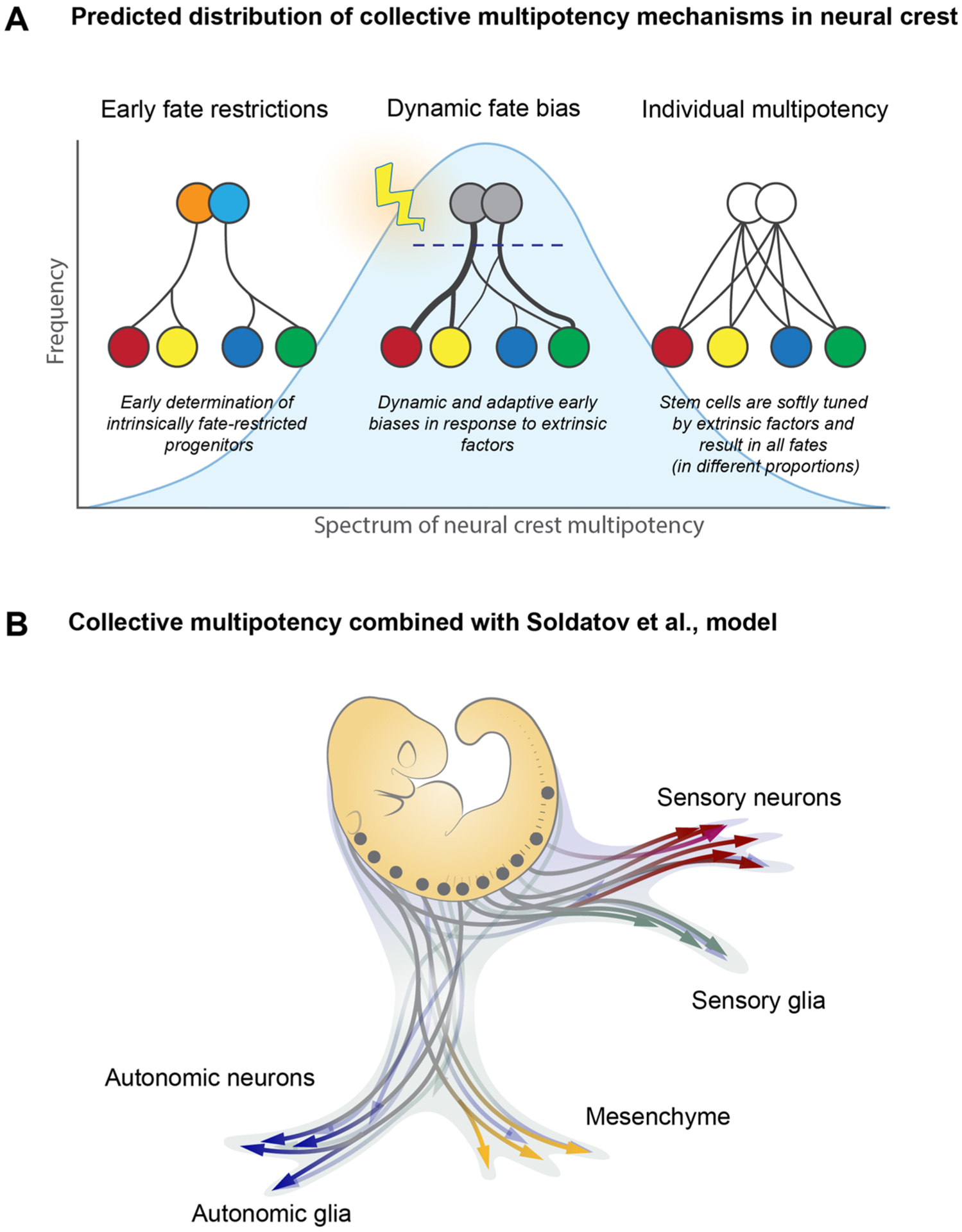Fig. 5.

A hypothesis of the distributed fate potential across the entire population of the NCCs (collective multipotency hypothesis). A. Multiple competing models, such as “early fate restriction model”, “dynamic fate biases model” and “individual multipotency” model can be reconciled into one unifying framework of a multipotency distribution across the entire neural crest population. Within this concept, the formerly competing models are not mutually exclusive, but might be each utilized by the embryo with varying degrees of frequency. (Left) In the model describing early restrictions, the NCCs would be restricted to producing specific sublineages by the time of their formation in the dorsal neural tube and possibly even earlier. Thus, an “early restrictions” model imagines the neural crest as a mixed population of precursors (shown by differently colored circles) with distinct non-overlapping developmental potentials. At an extreme version of this model, some early restrictions may result in unipotent crest cells. (Middle) In the model describing dynamic fate biases, the individual NCCs become fate-biased and do not give rise to the entire spectrum of possible fates due to signaling factors present in the dorsal neural tube and later during cell delamination. The biases control the proportionality of fate allocation in the progeny of each NCC clone, and, as a result, individual NCCs will contribute only to a subspectrum of fates with varying degrees of overlap and contribution. (Right) In the model describing individual multipotency, the entire range of NCC fates is de facto produced by any of the individual NCCs. Thus, an individual multipotency model imagines the neural crest as a homogenous population of multipotent stem cells, each resulting in the full range of progeny. (B) An example of the entire neural crest populations navigating the fate landscape by utilizing a combination of modes of multipotency. Some arrows are highly branching, others are more restricted. At the same time, the sum of the individual NCCs results in collective multipotency covering all developmental needs.
